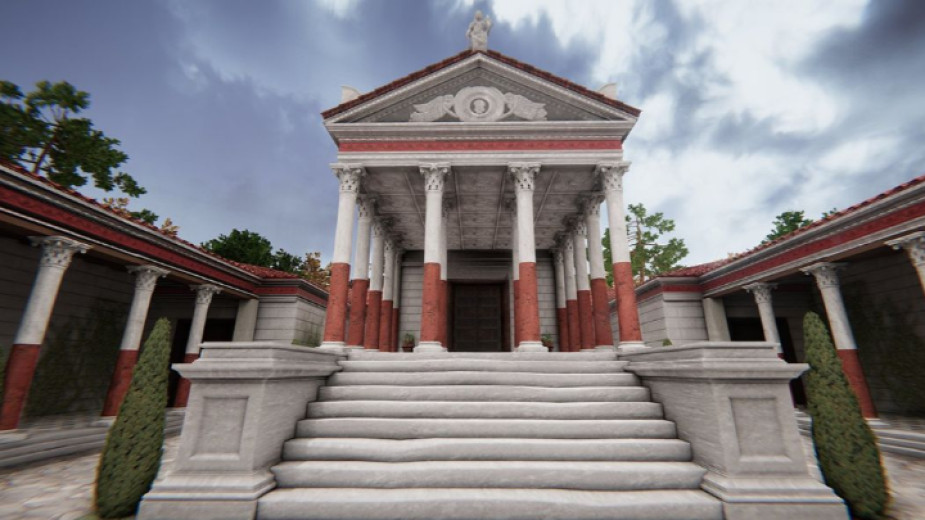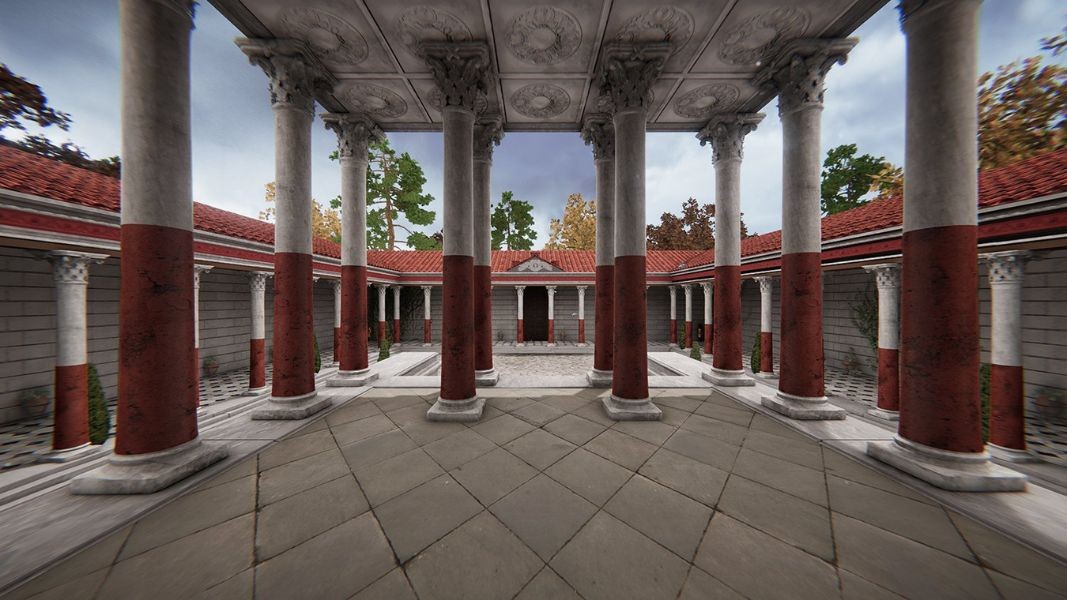 4
4
Visitors to the National History Museum in Sofia can now take a virtual walk in the temple of the ancient Roman goddess of happiness and fortune Fortuna. The building is part of the former Roman colony of Ulpia Oescus near the present-day Bulgarian village of Gigen, near the Danube River. The virtual restoration reveals in the smallest details all the splendor and beauty of the former temple and is now part of the permanent exhibition of Bulgaria’s National History Museum.
The Temple of Fortune (templum Fortunae) was located in the Forum complex of Ulpia Оеscus. It has been fully discovered and studied by archaeologists. The building was constructed in the Corinthian style. According to a Latin inscription, the temple was dedicated to the Roman emperor Commodus (180-192) and was built with the funds of the then "association of craftsmen" (collegium fabrorum) in 190.

The colonnade of the courtyard was decorated with a frieze - architraves with embossed bull heads and laurel garlands. The temple consisted of an entrance hall and a cult room. Its southern façade had four Corinthian columns. On the triangular pediment there were two Victorias depicted, holding a laurel wreath. Inside, in the wreath, was a relief image - probably the head of Medusa, to protect against evil. The temple complex was destroyed by the Goths or by an earthquake in 376-378.

You can find more interesting details related to the tumultuous story of the ancient Roman city of Ulpia Oescus here:
Compiled by Veneta Nikolova
Photos: National History Museum
English version Rositsa Petkova
Archaeologists from the Historical Museum in the town of Gorna Oryahovitsa have discovered a settlement of the Cumans this summer during the excavations of a medieval necropolis east of the Thracian fortress of Rykhovets near the town of Gorna..
Not far from the town of Lovech, between the villages of Doirentsi and Drenov, during the construction of the future route of the Hemus motorway, a seven-thousand-year-old pit sanctuary surrounded by a ritual ditch was discovered . Its exploration began..
On one of the hottest days of summer, 20 July, the Christian Orthodox church honours the prophet Elijah. Many churches around the country have been named after the Old Testament prophet. According to the bible, Elijah lived in the 9 th century BC...

+359 2 9336 661
